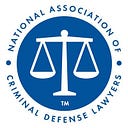The Roger Stone Sentencing Highlights the Impact of Federal Sentencing Enhancements
By Timothy E. Zerillo*
Politics aside, the Roger Stone sentencing, set for February 20, 2020, highlights an important issue which rears its ugly head in nearly every federal sentencing: enhancements. Those who have been through a federal sentencing quickly learn that it is the enhancements that really lengthen a federal prison term. Allow me to explain.
Imagine you find yourself in a federal courtroom convicted of a crime. Perhaps you pled guilty. Perhaps you were convicted after trial. Naturally, you wonder “what’s next?”
In sum, what is next is a complicated series of calculations that are done to reduce your convictions to an offense level. Your offense level is compared on one axis to your criminal history category on another axis and voilà, you have your sentencing range.
That sentencing range is the presumptive range in which your sentence should fall. The sentencing judge can depart upwards or downwards from that range depending on a number of different factors that are too broad for this article. However, the sentencing guideline range, while not mandatory, is presumptively the range of your sentence.
So, how do we get to that base offense level, on which your foreseeable future will be based? In many cases, that level will be determined by the imposition of sentencing enhancements.
When you are convicted of an offense, that offense has a base offense level. Since you have already been convicted of that offense — either by plea or a loss at trial — the base offense level is often not in controversy. However, the enhancements of the sentence often are. The sentencing judge determines whether or not the enhancement applies. As a result, defendants pending sentencing truly do not know how much time they will serve until the day of their sentencing, when the applicability of the enhancements to their case is determined by the judge.
In November of 2019, Roger Stone was convicted after trial of obstructing a congressional investigation in violation of 18 U.S.C. § 1505, making numerous false statements to Congress in violation of 18 U.S.C. § 1001(a)(2) and witness tampering in violation of 18 U.S.C. § 1512(b)(1). The base offense level for these offenses is a level 14. For someone like Mr. Stone, with no criminal history, this results in a sentencing guideline range of 15 to 21 months. However, the sentencing enhancements, originally recommended by the government, provide a dramatic exemplar of how federal sentencing truly works.
The potential Roger Stone enhancements move the base offense level of 14 all the way to a level 29 (8 levels are added for threatening to cause physical injury to a person in order to obstruct the administration of justice, 3 levels are added for substantial interference with the administration of justice, 2 levels are added because the offense was otherwise extensive in scope, planning, or preparation and 2 levels are added for obstruction of justice). The practical effect of these additions is the sentencing guideline range moves from 15 to 21 months before the enhancements to 87 to 108 months after the enhancements. This is a difference of between 6 years and over 7 years.
Now, Roger Stone’s case is certainly unusual. It is particularly in the news now because of the withdrawal of four federal prosecutors and the Department of Justice’s reversal of its position on those enhancements. Roger Stone aside, this particular sentencing, currently set for February 20, 2020, illustrates the fundamental problem with enhancements in the federal system.
For example, the enhancements in child pornography possession cases have come under attack in recent years because they are so unfair. One such child pornography possession enhancement is for the use of a computer. This 2 level enhancement does what it sounds like it does: if you used a computer to obtain, view or store child pornography, the enhancement applies.
The problem with the enhancement is that a computer is used virtually every time the offense is committed. So, the enhancement unfairly punishes conduct that is captured in the base offense level for possession of child pornography.
It is not just child pornography defendants that get nailed by enhancements. Drug defendants, theft defendants, white collar defendants, all get hammered at sentencing by enhancements. These enhancements sometimes capture aggravated conduct by the defendant, which is their intended purpose. Oftentimes they merely lengthen the sentence for no good reason.
Every day, in all 94 of the District Courts throughout the United States, defendants will be sentenced and enhancements will be metered out. These enhancements, along with mandatory minimums and a desire to punish rather than rehabilitate, all serve to contribute to our culture of mass incarceration. Regardless of your opinion about Roger Stone, his situation highlights how sentences can skyrocket based on sometimes fair, sometimes ridiculously unfair, sentencing enhancements.
About the Author
*Timothy E. Zerillo is a criminal defense lawyer in Portland, Maine. He serves on the Board of Directors of the National Association of Criminal Defense Lawyers and is a former President of the Maine Association of Criminal Defense Lawyers. Tim is the author of the book Defending Specific Crimes, published by James Publishing.
© 2020, National Association of Criminal Defense Lawyers. All rights reserved.
